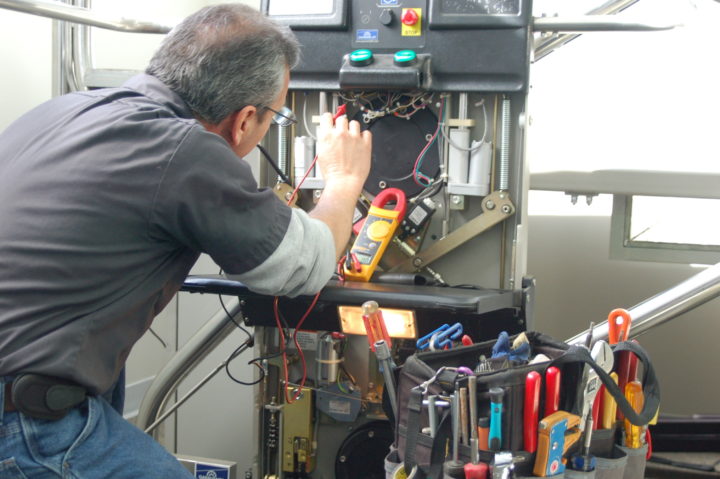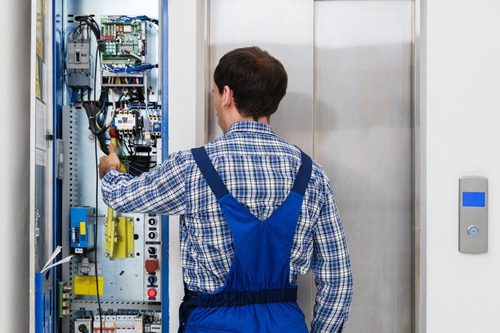Finest Lift Maintenance Company Options Near Me for Expert Lift Repairs
Wiki Article
Comprehensive Guide to Lift Systems and Their Upkeep
Navigating the elaborate globe of elevator systems and their upkeep is a job that demands accuracy and knowledge. From the numerous types of lift systems in use to the thorough adherence to security laws, the maintenance of these upright transportation tools is a diverse undertaking.Sorts Of Lift Equipments
Elevator systems can be found in various kinds, each made to suit certain structure requirements and individual demands. The most typical kinds consist of hydraulic elevators, grip lifts, machine-room-less elevators, and vacuum elevators. Hydraulic lifts are perfect for low-rise structures and make use of a hydraulic piston to move the elevator car. Grip lifts, on the various other hand, are much more fit for skyscrapers and use steel ropes and counterweights to move the car. Machine-room-less elevators are a space-saving choice as they do not call for a different machine space for the lift equipment. Vacuum cleaner elevators, a much more modern-day innovation, use atmospheric pressure differentials to move the cars and truck within a clear tube.Each kind of elevator system has its own benefits and disadvantages, making it important for structure proprietors and designers to very carefully consider their specific requirements before choosing one of the most ideal alternative. Elements such as building height, area accessibility, power performance, and budget restrictions all play a substantial role in establishing the very best elevator system for a particular building.
Usual Maintenance Issues
Normal maintenance of elevator systems is crucial to ensure smooth operation and lengthen their life expectancy. Despite routine maintenance, elevator systems can still encounter typical upkeep issues that need to be immediately addressed to protect against disruptions in service. Routine inspections and proactive maintenance can assist recognize and solve these common maintenance issues prior to they escalate and influence the overall performance of the elevator system.
Safety Laws and Conformity
Abiding by stringent safety regulations and making certain compliance with market requirements are extremely important for maintaining the operational honesty of lift systems. Elevators go through a thorough collection of safety and security laws to safeguard travelers, maintenance personnel, and the basic public. Regulatory bodies such as the Occupational Safety And Security and Health And Wellness Administration (OSHA) in the United States and the European Lift Association (ELA) in Europe establish guidelines that cover various facets of elevator design, upkeep, procedure, and installment.Compliance with these regulations is not only a lawful requirement however also an ethical obligation for building proprietors and lift upkeep companies. Failing to satisfy security standards can lead to fines, lawful responsibilities, and, most significantly, jeopardize the safety of individuals using the elevator. Normal evaluations, maintenance checks, and adherence to security procedures outlined in the guidelines are important to ensure the risk-free and reliable operation of elevator systems. By focusing on safety and security policies and compliance, stakeholders can promote the trust of the public and alleviate possible risks related to lift usage.
Best Practices for Maintenance

Structure owners should additionally think about spending in innovation upgrades to enhance the performance and security of their elevator systems. By adhering to these best techniques, elevator systems can operate efficiently explanation and safely, giving trustworthy vertical transport for residents.

Advanced Technologies for Efficiency
Carrying out innovative modern technologies in lift systems can dramatically enhance functional performance and guest experience. lift maintenance services. One of the key advancements in elevator technology is the intro of location control systems. These systems permit travelers to input their preferred floor before entering the elevator, which after that routes them to one of the most effective cars and truck. By optimizing and reducing unnecessary stops travel courses, location control systems lower wait times and original site blockage in high-traffic structures.Moreover, the integration of clever sensors and predictive upkeep abilities has changed elevator upkeep. These sensing units can spot possible problems before they escalate, making it possible for positive maintenance treatments and reducing downtime. In addition, the use of regenerative drives and energy-efficient parts assists decrease power intake and operating expenses in lift systems.
Moreover, the execution of cloud-based tracking and remote diagnostics permits real-time tracking of lift performance and immediate troubleshooting of any type of breakdowns. This positive strategy not only improves system integrity but likewise boosts the overall individual experience by ensuring smooth and undisturbed elevator procedures.
Conclusion
To conclude, understanding the various sorts of elevator systems, typical upkeep issues, safety and security regulations, finest maintenance practices, and advanced modern technologies for efficiency is vital for making certain the smooth operation of elevators. By adhering to safety and security useful source guidelines and implementing finest techniques for upkeep, building proprietors can prolong the life-span of their lift systems and make sure the safety of guests. It is necessary to stay upgraded on the most recent innovations in lift technology to improve efficiency and dependability.The most common kinds consist of hydraulic elevators, grip elevators, machine-room-less elevators, and vacuum lifts. Hydraulic lifts are perfect for low-rise buildings and use a hydraulic piston to move the elevator automobile. Machine-room-less elevators are a space-saving option as they do not require a separate machine area for the lift equipment. Routine assessments and positive maintenance can help identify and resolve these usual upkeep problems before they escalate and influence the total efficiency of the elevator system.

Report this wiki page